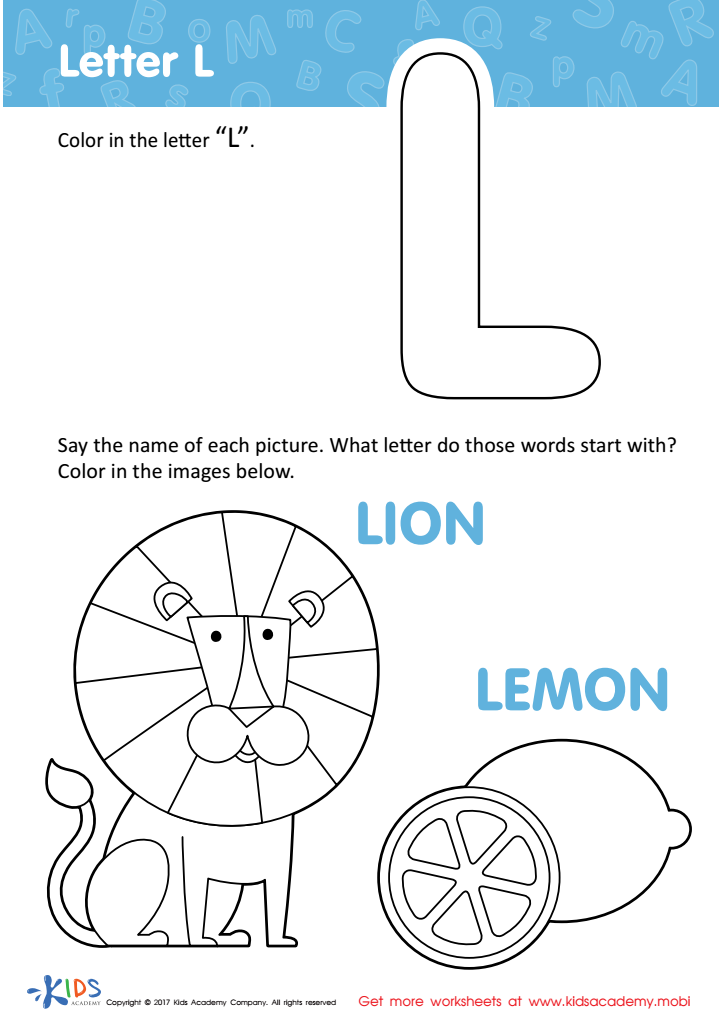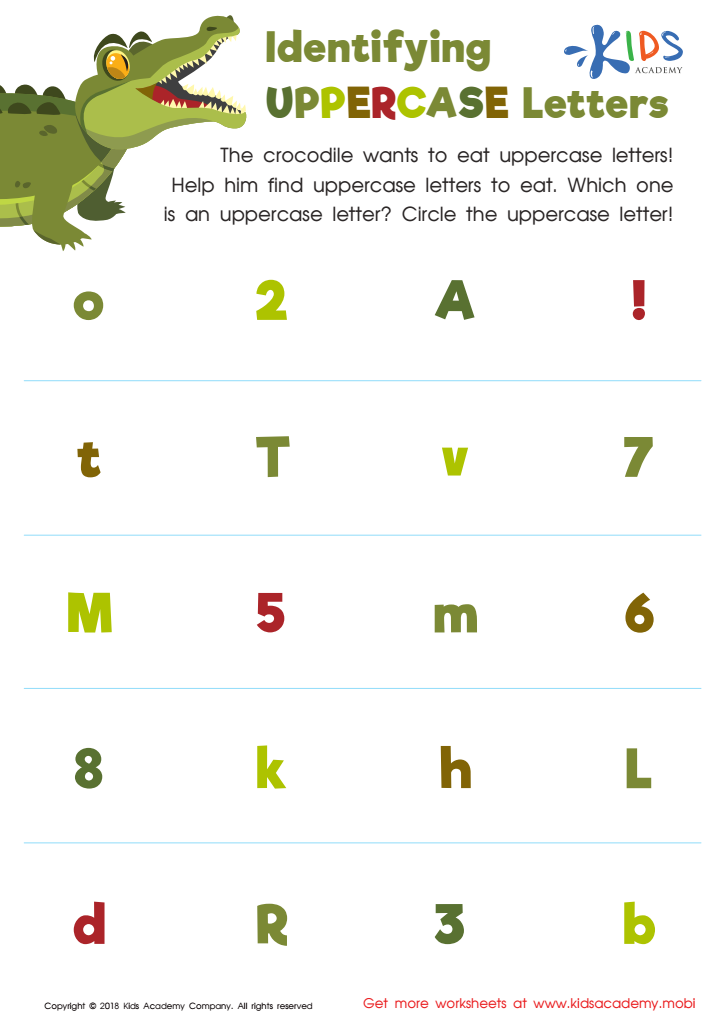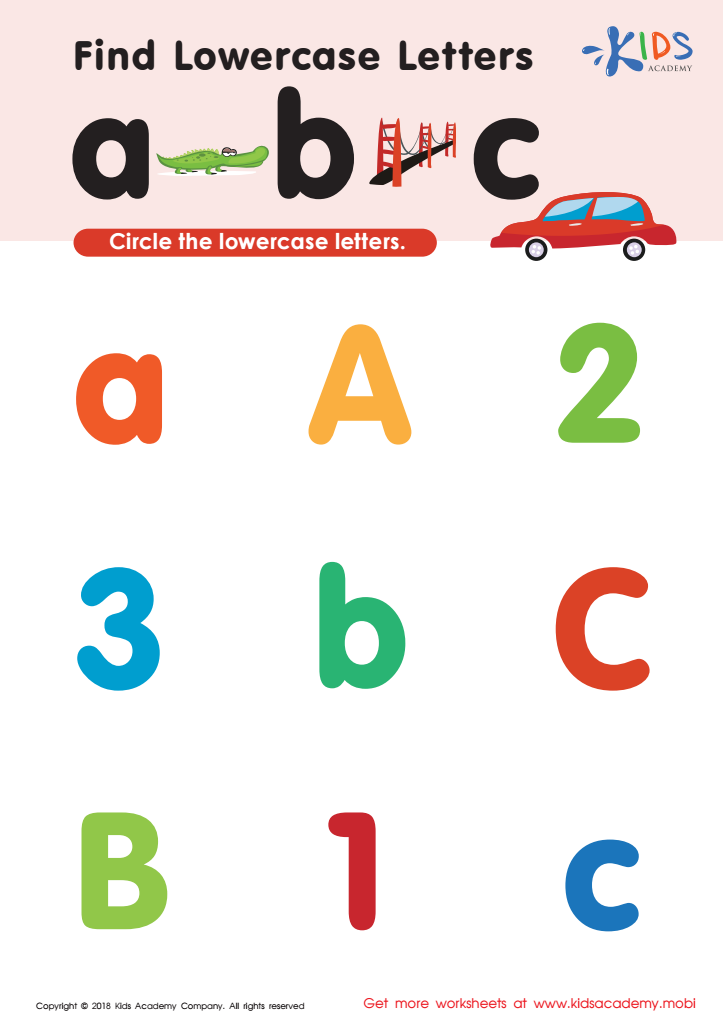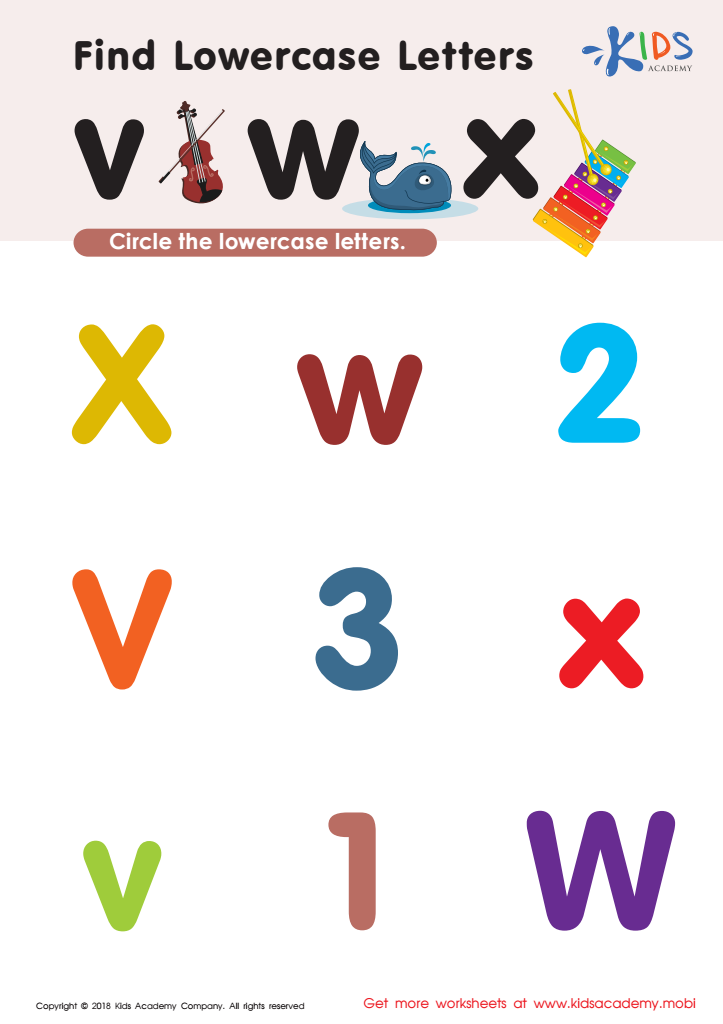Visual discrimination skills Alphabet Worksheets for Ages 5-7
5 filtered results
-
From - To
Enhance your child's visual discrimination skills with our engaging Alphabet Worksheets for ages 5-7. Designed to strengthen the ability to differentiate between letters, our fun and interactive activities support early literacy and cognitive development. Each worksheet features vibrant illustrations and exercises that encourage children to identify, match, and sort alphabet characters, ensuring an enjoyable learning experience. Perfect for parents and educators alike, these printable resources provide a solid foundation for reading readiness. Help your little ones boost their attention to detail and find joy in learning the alphabet through play! Start exploring our comprehensive collection today!


Letter L Coloring Sheet


Find Uppercase Letters A, B, and C Worksheet


Identifying Uppercase Letters Worksheet


Find lowercase letters a b c Worksheet


Find Lowercase Letters v w x Worksheet
Visual discrimination skills are critical for children aged 5-7, particularly when it comes to recognizing letters and the alphabet. These skills enable young learners to identify the differences and similarities among letters, which is foundational for reading and writing development. Teachers and parents should prioritize nurturing these skills because they directly impact a child’s literacy journey.
Firstly, strong visual discrimination aids in letter recognition, allowing children to distinguish between letters that may look similar, such as "b" and "d." Early mastery of these distinctions can prevent confusion, leading to greater confidence in reading. Secondly, visual discrimination contributes to enhanced comprehension and fluency. When children can quickly and accurately identify letters and words, they can focus on understanding the meaning behind the text rather than getting bogged down by decoding.
Moreover, fostering these skills can be a fun and engaging experience. With various teaching tools like picture sorting, matching games, and flashcards, parents and teachers can make learning enjoyable. Ultimately, by emphasizing visual discrimination early on, adults can set a strong foundation for their children's academic success and instill a love of reading that lasts a lifetime.

 Assign to My Students
Assign to My Students















